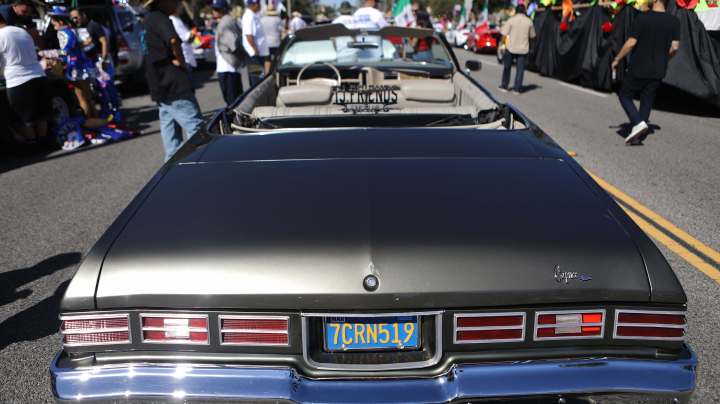Iconic Chicano Car Magazine ‘Lowrider’ Will Cease to Print

A 'lowrider' car is parked before the 72nd annual East LA Mexican Independence Day Parade on September 16, 2018 in Los Angeles, California. Photo by Mario Tama/Getty Images
Lowrider magazine, an iconic Chicano car publication, will cease to print after a 42-year run.
The Los Angeles Times reports that the magazine, which will continue to run digitally, is one of several publications the media company TEN: The Enthusiast Network is shuttering by the end of 2020. Lowrider will stop printing in March.
“It’s definitely the end of an era,” David Polanco, the president of the United Lowrider Council of San Jose, told San Francisco CBS affiliate KPIX 5. “I’m sad to see it go, but things have changed in the direction of the company.”
Lowrider was founded in 1977 by San Jose State students Larry Gonzalez, David Nuñez and Sonny Madrid. The DIY publication aimed to highlight the Chicano lowrider community in California. While it struggled during its first year, the magazine picked up in the 1980s when it began featuring bikini-clad women on its covers alongside the vehicles — a visual direction they moved away from in recent years.

The magazine, however, featured much more than striking imagery of vintage cars. It also included cultural and political coverage, including sections like “La Raza Report,” which featured editorials about political or educational issues in the community, “Lowriders of the Past,” where readers submitted photos of relatives posing with their customized cars from the 1940s Pachuco era as well as a Dear Abby-like advice column, poetry and short stories.
The publication, which also funded a scholarship program for Latino students, featured West Coast legends on its covers, including Cheech and Chong and rappers Ice Cube and Snoop Dogg.
“It was really an art magazine, a community history magazine, all around the love of lowriders,” Denise Sandoval, a professor of Chicana and Chicano Studies at Cal State Northridge and a lowrider expert, told the Los Angeles Times. “At its heart, it’s been a key tool to keeping alive Chicanismo and Chicano identity.”
For Gilbert Chavez, who was inspired to start his own lowriding publication Streetlow, the classic magazine challenged stereotypes and widened representation of Chicano brotherhood.
“[It showed] what we were about, that we weren’t just criminals, we were kids building cars to our liking,” Chavez told KPIX 5.
Despite its focus on Chicano culture, Lowrider cultivated a global audience, attracting white, Asian and African-American readers in the U.S. as well as in Japan, Europe and Australia.
While the magazine went out of business in 1988, due to the rise of competition from copy-cat publications, it was revived in 1988. By 2000, Lowrider was among the bestselling automotive glossies in the country, with an average monthly circulation of about 210,000 copies.
“It was like the airplane that took us around the world and let other people know who we were,” Chavez said.